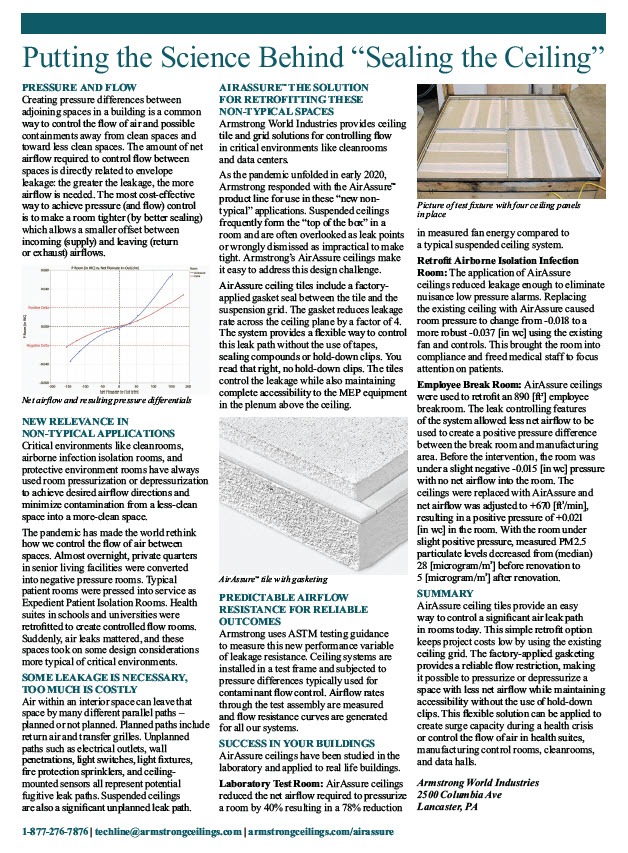
Putting the Science Behind "Sealing the Ceiling"
William Frantz, Senior Principal Scientist, ASHRAE Member
Have you ever thought about how much air leaks through a traditional ceiling grid and tile? No? Most people haven’t and don’t. If you are designing or renovating healthcare, laboratory and pressurized environments, you should think again about your ceiling selections and why AIRASSURE might be a better choice. Read more below.
Pressure and Flow
Creating pressure differences between adjoining spaces in a building is a common way to control the flow of air and possible containments away from clean spaces and toward less clean spaces. The amount of net airflow required to control flow between spaces is directly related to envelope leakage: the greater the leakage, the more airflow is needed. The most cost-effective way to achieve pressure (and flow) control is to make a room tighter (by better sealing) which allows a smaller offset between incoming (supply) and leaving (return or exhaust) airflows.
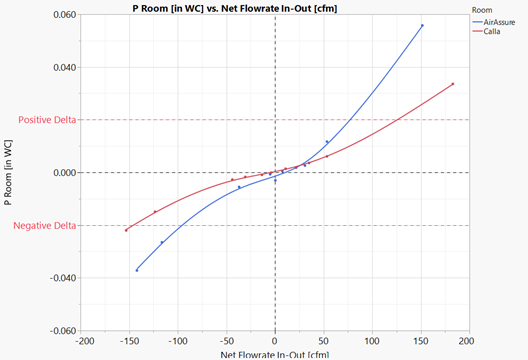
Net airflow and resulting pressure differentials.
New Relevance in Non-Typical Applications
Critical environments like cleanrooms, airborne infection isolation rooms, and protective environment rooms have always used room pressurization or depressurization to achieve desired airflow directions and minimize contamination from a less-clean space into a more-clean space.
The pandemic has made the world rethink how we control the flow of air between spaces. Almost overnight, private quarters in senior living facilities were converted into negative pressure rooms. Typical patient rooms were pressed into service as Expedient Patient Isolation Rooms. Health suites in schools and universities were retrofitted to create controlled flow rooms. Suddenly, air leaks mattered, and these spaces took on some design considerations more typical of critical environments.
Some Leakage is Necessary, Too Much is Costly
Air within an interior space can leave that space by many different parallel paths – planned or not planned. Planned paths include return air and transfer grilles. Unplanned paths such as electrical outlets, wall penetrations, light switches, light fixtures, fire protection sprinklers, and ceiling mounted sensors all represent potential fugitive leak paths. Suspended ceilings are also a significant unplanned leak path.
AIRASSURE: The Solution for Retrofitting These Non-Typical Spaces
Armstrong World Industries provides ceiling tile and grid solutions for controlling flow in critical environments like cleanrooms and data centers.
As the pandemic unfolded in early 2020, Armstrong responded with the AIRASSURE product line for use in these “new non-typical” applications. Suspended ceilings frequently form the “top of the box” in a room and are often overlooked as leak points or wrongly dismissed as impractical to make tight. Armstrong’s AIRASSURE ceilings make it easy to address this design challenge.
AIRASSURE ceiling tiles include a factory-applied gasket seal between the tile and the suspension grid.
The gasket reduces leakage rate across the ceiling plane by a factor of 4. The system provides a flexible way to control this leak path without the use of tapes, sealing compounds or hold-down clips. You read that right, no hold-down clips. The tiles control the leakage while also maintaining complete accessibility to the MEP equipment in the plenum above the ceiling.
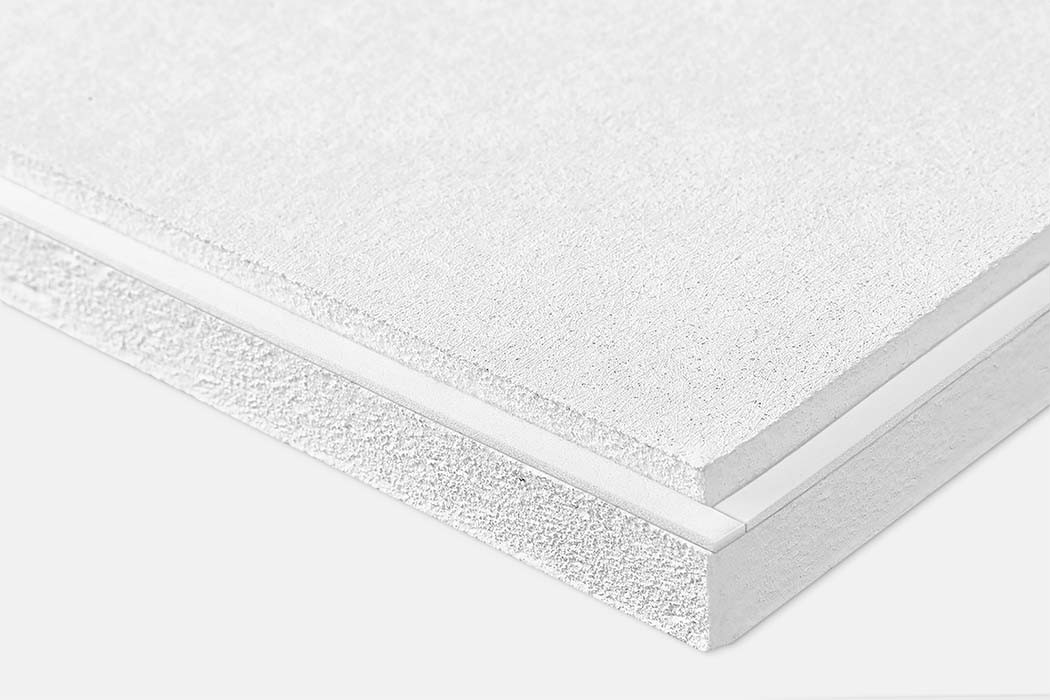
AIRASSURE tile with gasketing.
Predictable Airflow Resistance for Reliable Outcomes
Armstrong uses ASTM testing guidance to measure this new performance variable of leakage resistance. Ceiling systems are installed in a test frame and subjected to pressure differences typically used for contaminant flow control. Airflow rates through the test assembly are measured and flow resistance curves are generated for all our systems.
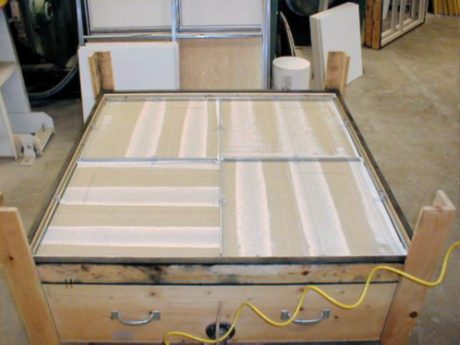
Picture of test fixture with four ceiling panels in place.
Success in Your Buildings
AIRASSURE ceilings have been studied in the laboratory and applied to real life buildings.
Laboratory Test Room: AIRASSURE ceilings reduced the net airflow required to pressurize a room by 40% resulting in a 78% reduction in measured fan energy compared to a typical suspended ceiling system.
Retrofit Airborne Isolation Infection Room: The application of AIRASSURE ceilings reduced leakage enough to eliminate nuisance low pressure alarms. Replacing the existing ceiling with AIRASSURE caused room pressure to change from -0.018 to a more robust -0.037 [in wc] using the existing fan and controls. This brought the room into compliance, and freed medical staff to focus attention on patients.
Employee Break Room: AIRASSURE ceilings were used to retrofit an 890 [ft2] employee breakroom. The leak controlling features of the system allowed less net airflow to be used to create a positive pressure difference between the break room and manufacturing area. Before the intervention, the room was under a slight negative -0.015 [in wc] pressure with no net airflow into the room. The ceilings were replaced with AIRASSURE and net airflow was adjusted to +670 [ft3/min], resulting in a positive pressure of +0.021 [in wc] in the room. With the room under slight positive pressure, measured PM2.5 particulate levels decreased from (median) 28 [microgram/m3] before renovation to 5 [microgram/m3] after renovation.
Summary
AIRASSURE ceiling tiles provide an easy way to control a significant air leak path in rooms today. This simple retrofit option keeps project costs low by using the existing ceiling grid. The factory-applied gasketing provides a reliable flow restriction, making it possible to pressurize or depressurize a space with less net airflow while maintaining accessibility without the use of hold-down clips. This flexible solution can be applied to create surge capacity during a health crisis or control the flow of air in health suites, manufacturing control rooms, cleanrooms, and data halls.
Additional Resources
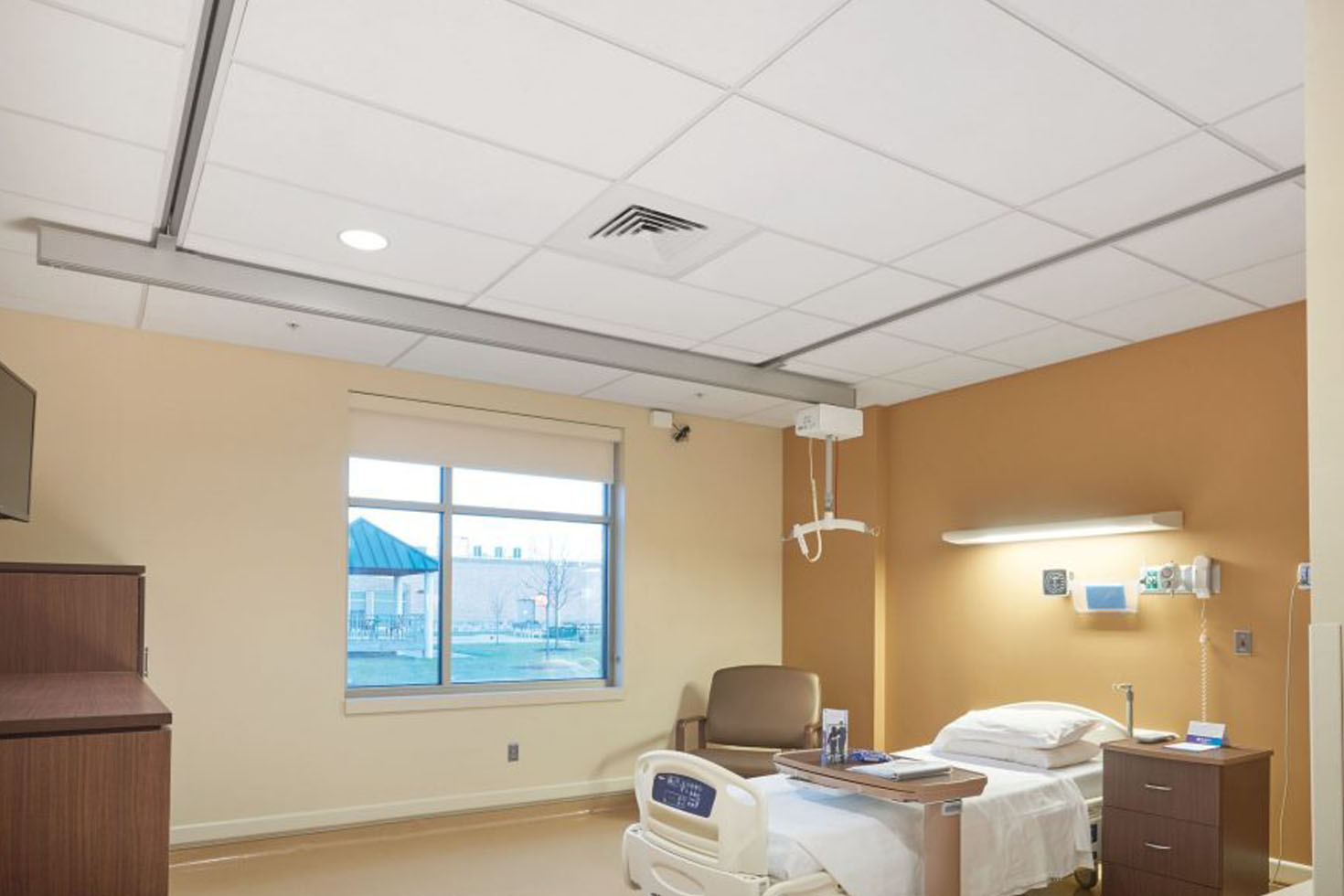
Encompass Health Rehabilitation Hospital
Negative pressure isolation room eliminates pressure variability with CALLA HEALTH ZONE AIRASSURE ceiling panels.
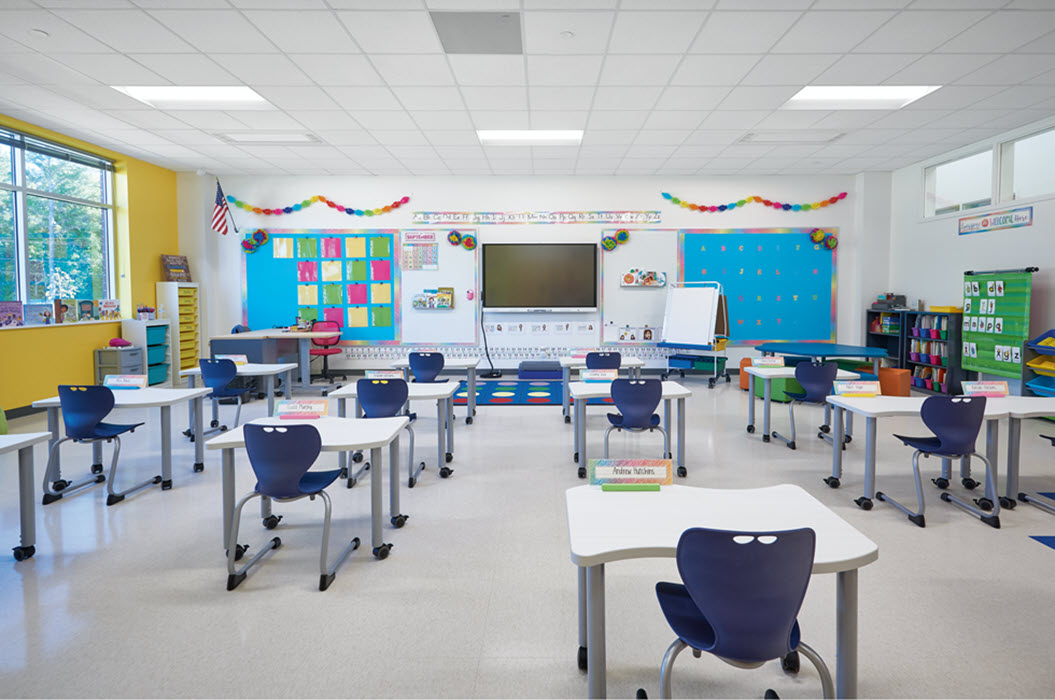
Mitigating Indoor Health Risks with Armstrong Ceiling Solutions
Haven Diagnostics AI-driven predictive modeling analyzes and quantifies relative risk reduction with Armstrong solutions focused on providing healthier, safer environments.
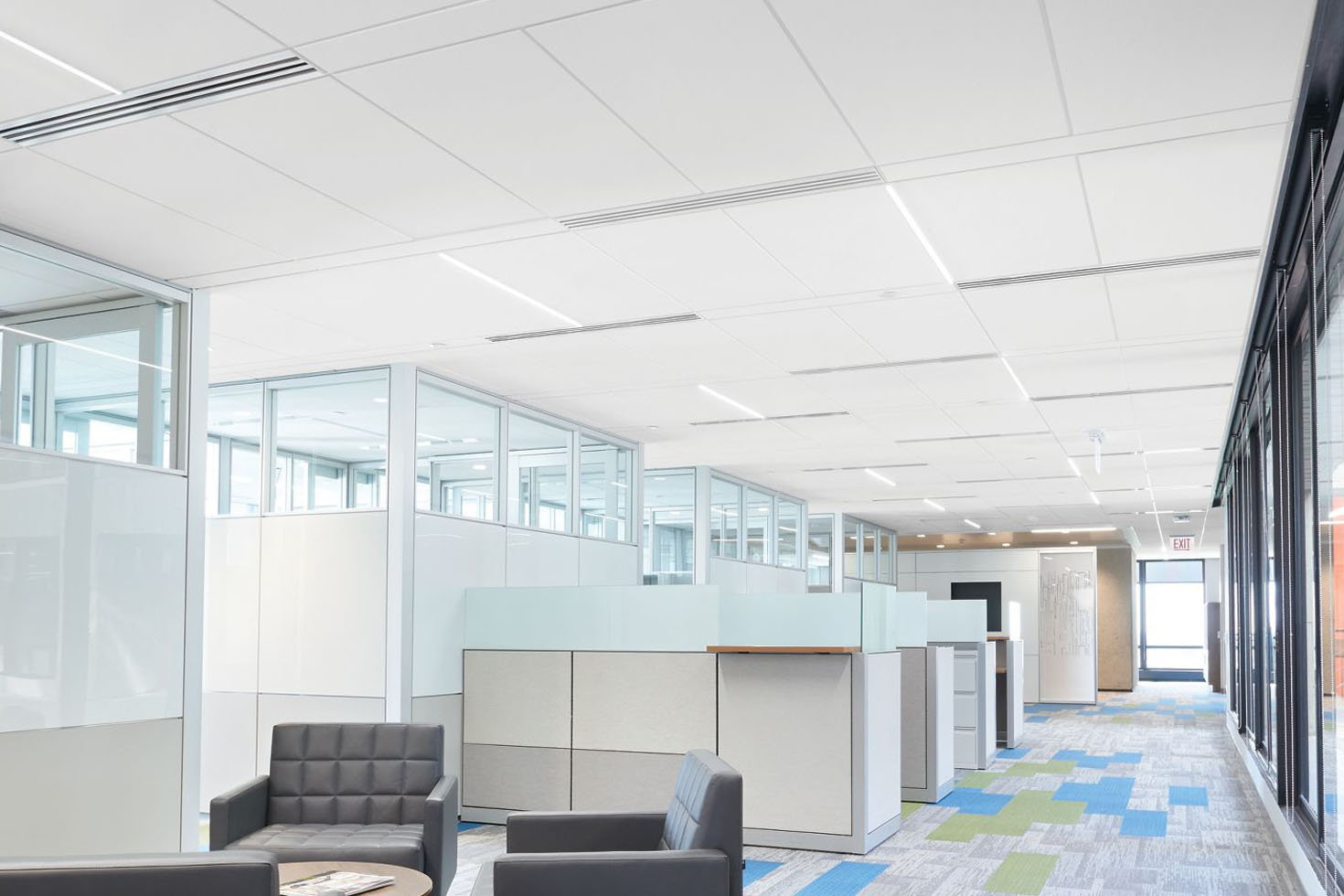
A Case for Suspended Ceiling Technologies
A simple building product could play an important role in reducing the spread of COVID-19 and airborne pathogens.